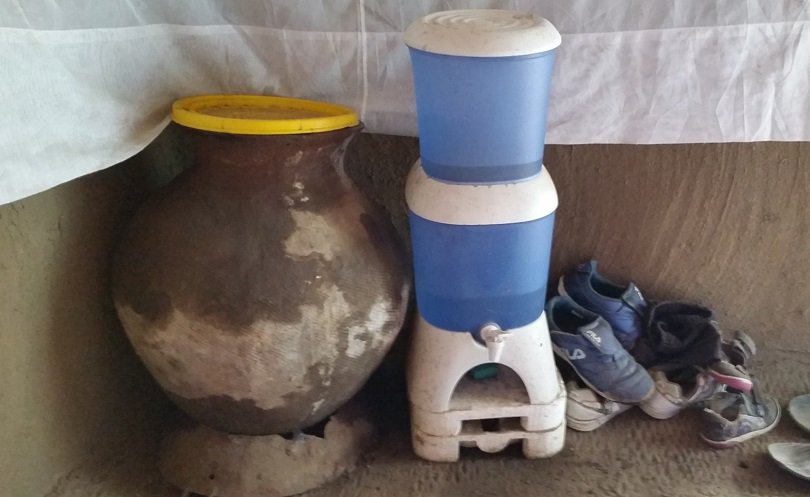Water filters come in all shapes and styles. And although each system is designed to filter contaminants and impurities from the water, replacement parts are often designed to work only within their original systems.
The use of simple water filters cuts diarrhea rates by half. Unfortunately, most existing water filter products are too costly and too complex for many poor families to purchase and use every day. Research shows that when people can’t access affordable and well-designed water filters, their risk of being exposed to contaminants increases.
For a resource inextricably linked to good health, lack of access to safe water is unacceptable.
But change is happening. PATH has produced a new system of interchangeable water-filter products that people want to buy and love to use. The products are possible through our Springboard Initiative, a combined effort to bring water filters to more families by sparking new manufacturing and investment.
Nearly 2 billion people use a water source contaminated with feces and related pathogens such as E. coli bacteria (WHO 2015). Contaminated water is estimated to cause 502,000 deaths every year due to acute diarrhea and resultant dehydration; this is the third-leading cause of child death (WHO 2015).
Illuminating idea: an interface to standardize water filters

The C1 Common Interface: a platform of invention and know-how that helps companies offer better water filters to poor consumers. Illustration: PATH.
Much like a socket works with a light bulb—whether it’s a fluorescent, LED, or halogen—PATH designed a standardized solution that will work for household water treatment and storage products. PATH’s product developers invented the C1 Common Interface, a standardized connection point between water filters and cartridges that allows interchangeability between different companies’ products.
“Our Springboard Initiative strategy was multi-tiered: we wanted to make products that were easy for consumers to use and maintain, while encouraging manufacturers to offer consumers low-cost products with higher levels of performance,” says Greg Zwisler, a commercialization officer who leads this initiative at PATH.
After 600 hours of in-home observations and research with over 10,000 consumers, PATH created and publicly shared the Springboard Initiative, the first user-driven design guidelines for companies in this product category.
“Essentially, we did the early work for companies by opening up access to our design guidelines and providing a no-cost license.” Adds Zwisler, “We’ve helped companies broaden choices for low-income households around the world.”

PATH’s user-centered process helps us develop the most appropriate products—ones that are accessible, affordable, acceptable, and easy to use—ensuring that the products will be used correctly and customer satisfaction will be increased. Photo: PATH/Greg Z
To that end, PATH came up with the first common-connection specification in the water filter category that benefits the entire market—from the manufacturer to the retailer, and most importantly the families who need clean water.
Improving household water treatment for families
As consumers see more low-cost choices, they’ll also have access to game-changing water treatment technologies that provide additional benefits. For instance, a new water filter launched this month by French multinational company Imerys is more than two to three times faster than comparable products.
“That speed could be a breakthrough for health,” says David Gittins, senior manager for New Technologies at Imerys. “Research tells us that high flow-rate is a key driver of consistent filter use by families.”
An ongoing, independent field evaluation of adapted prototypes of this new low-cost and user-friendly water filter with the C1 Common Interface also illustrated the importance of incorporating the needs of manufacturers and distributors into product design.
Zwisler adds, “By considering not just the end-users—and by sharing our C1 interface platform as an open-source design—we are helping companies big and small take solutions to impact. More lower‐income families will be drinking safer water, thanks to partners like Imerys that can take distribution to a global level.”
